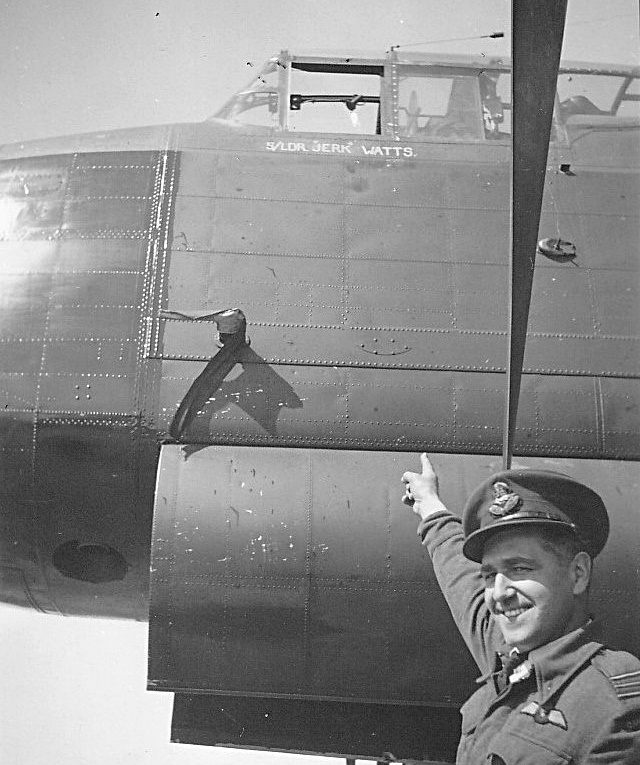

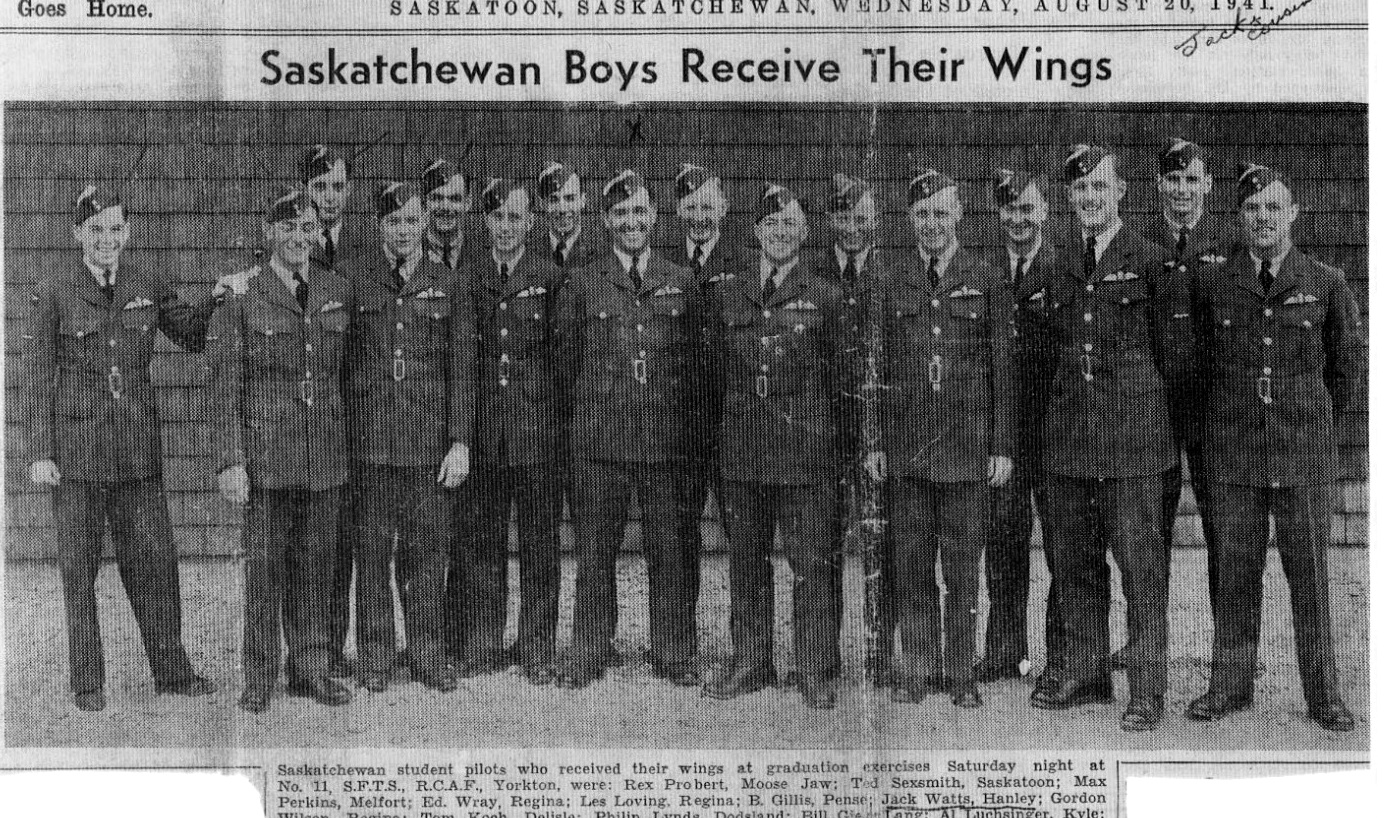
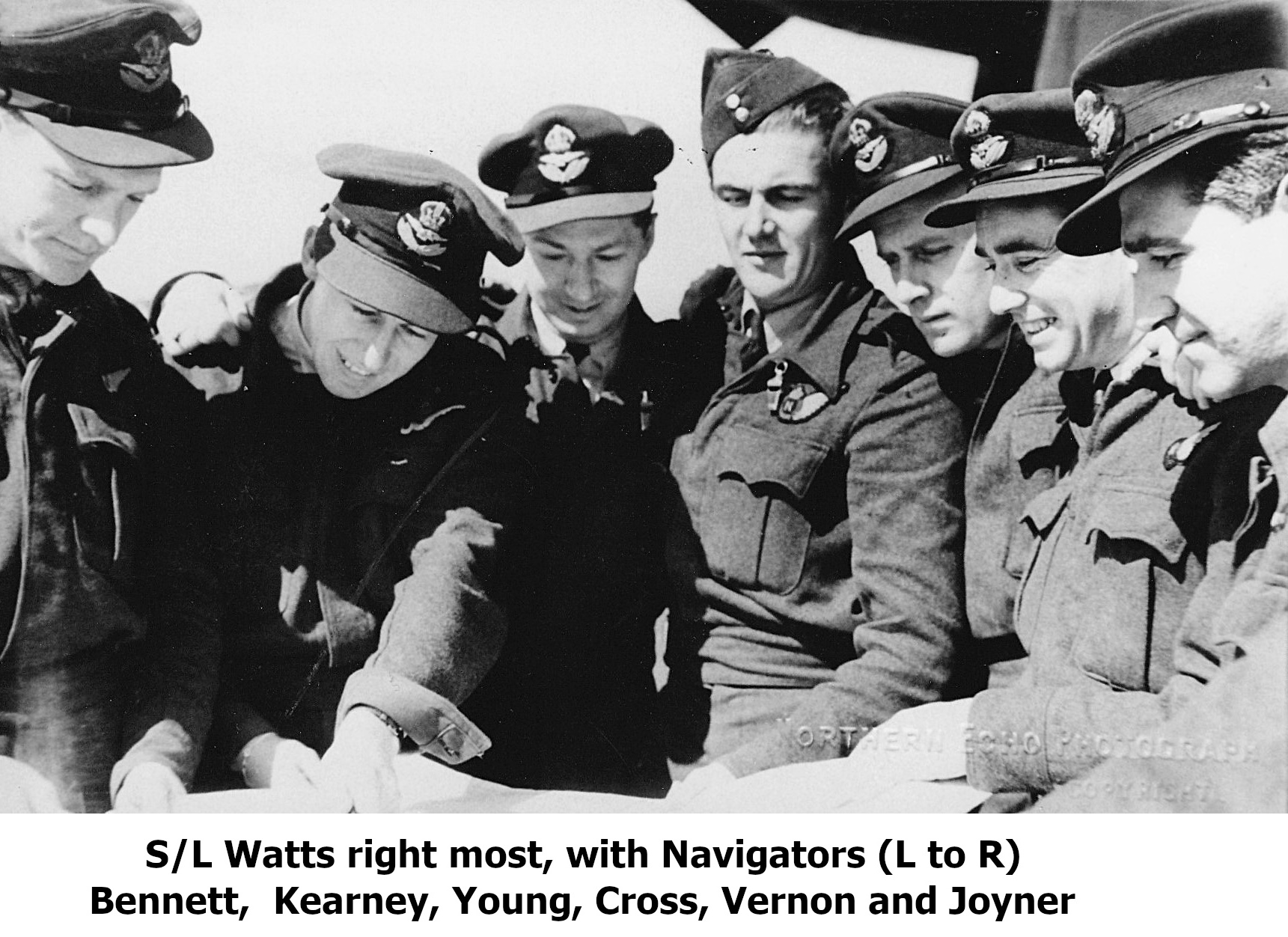 S/L Watts and his crew would continue with Ops. until April 22nd 1945. The air war was coming to an end the last operation for 419 Lancasters was on April 25th..
The Watts crew flew 20 op. While S/L Watts had completed two additional operations as part of the continuing Pilot training, known as Second Pilot he flew two sorties with an experienced crew.
S/L Watts and his crew would continue with Ops. until April 22nd 1945. The air war was coming to an end the last operation for 419 Lancasters was on April 25th..
The Watts crew flew 20 op. While S/L Watts had completed two additional operations as part of the continuing Pilot training, known as Second Pilot he flew two sorties with an experienced crew.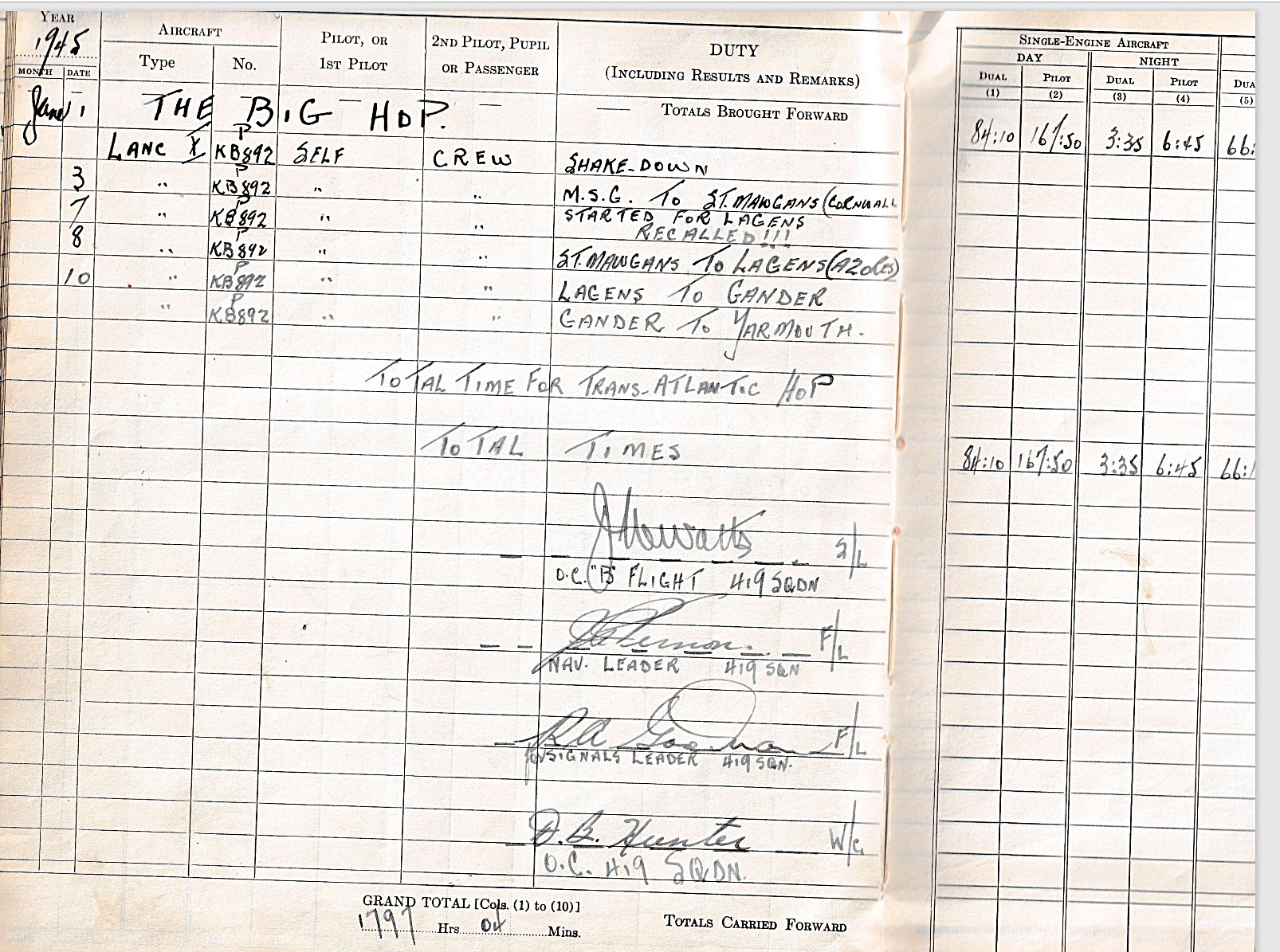
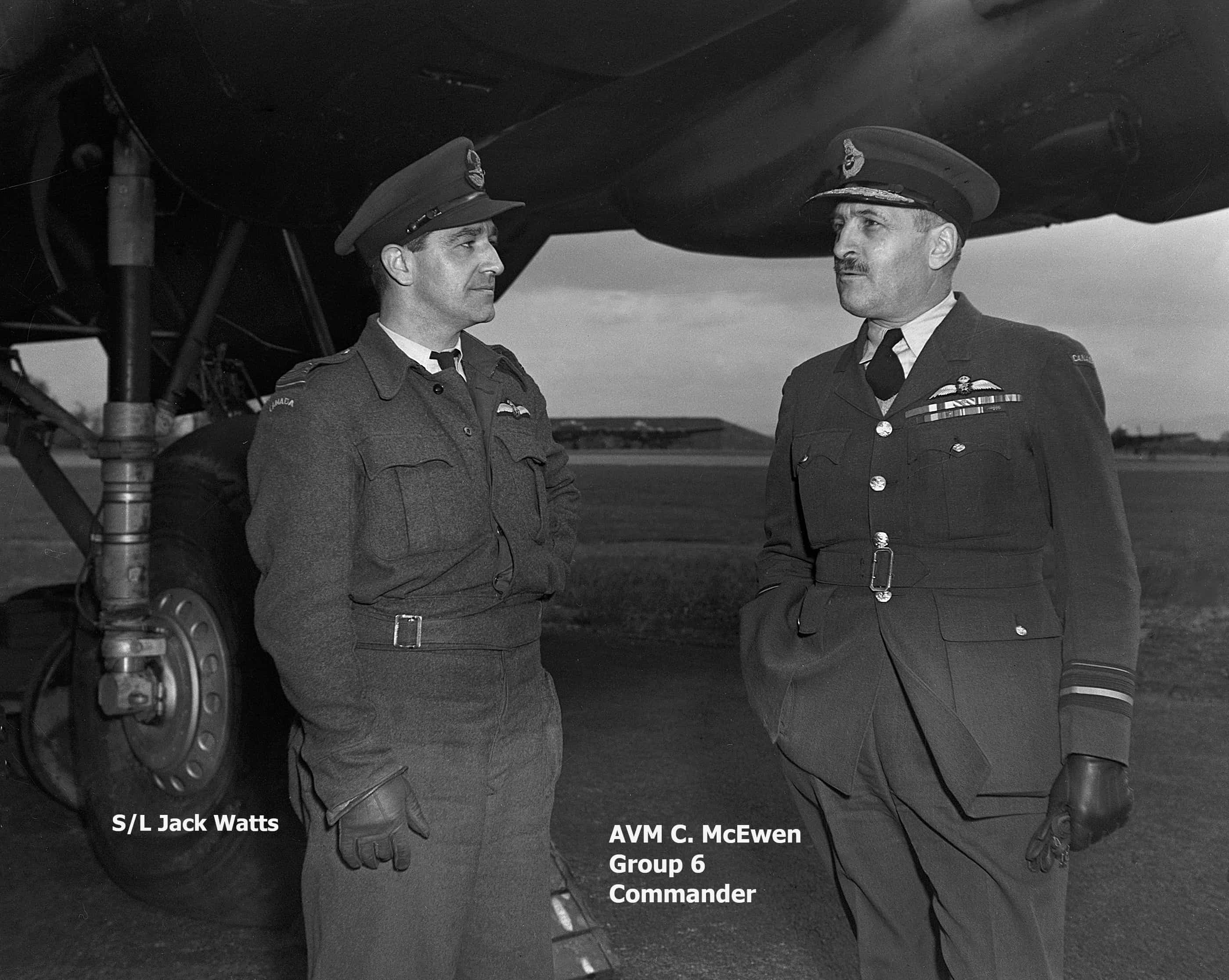 Jack Watts returned to civilian life in Saskatchewan after his return. On January 1, 1946 he received the Airforce Cross for his service to his country.
Jack Watts returned to civilian life in Saskatchewan after his return. On January 1, 1946 he received the Airforce Cross for his service to his country.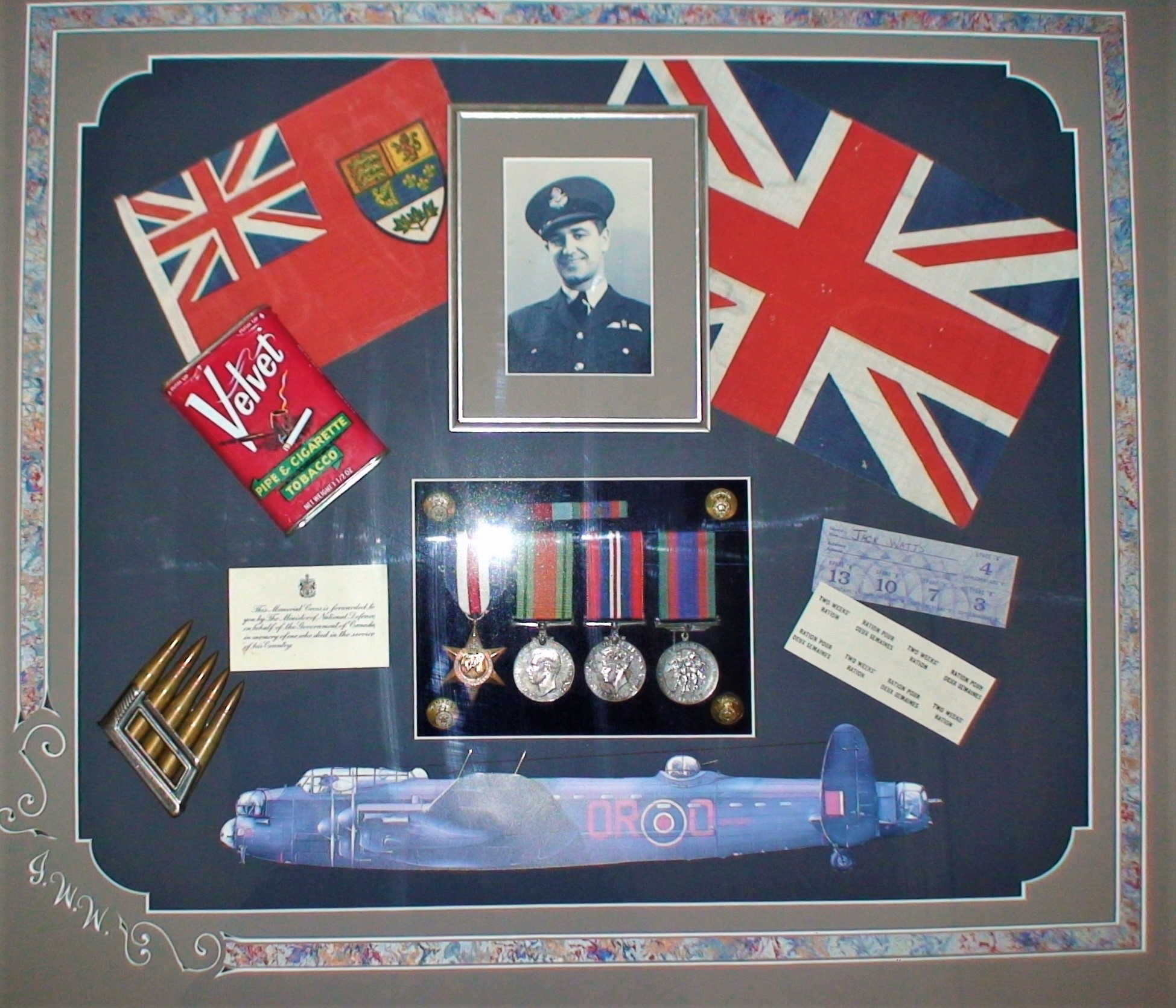 Jack Watts passed away in 1994 at age 82 in Edmonton.
Jack Watts passed away in 1994 at age 82 in Edmonton.